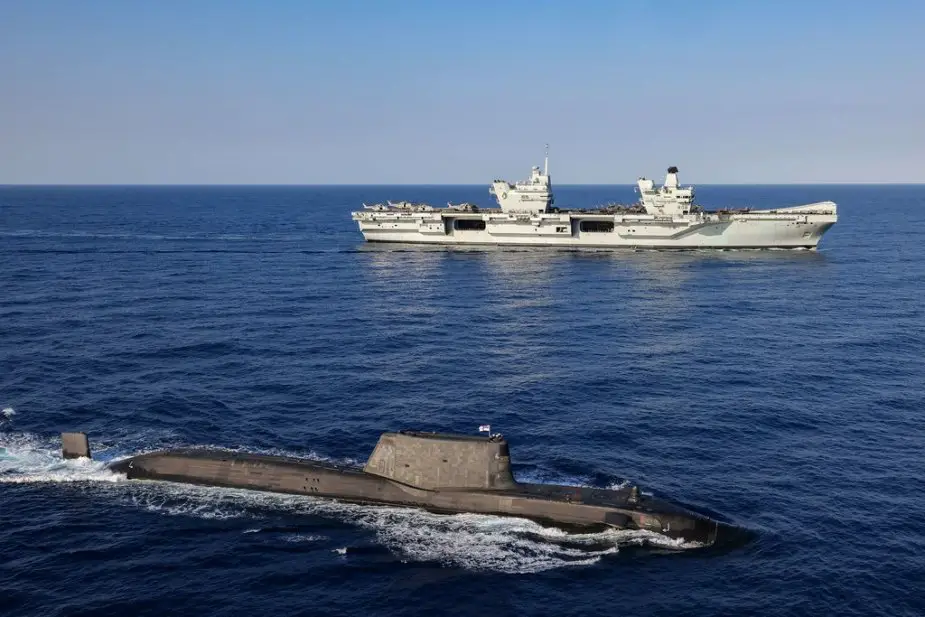According to information published by the government of the UK on July 22, 2021, the UK’s Carrier Strike Group 2021, led by HMS Queen Elizabeth has met up with the Indian Navy in the Bay of Bengal, for 3 days of complex maritime interactions.
Follow Navy Recognition on Google News at this link
 HMS Queen Elizabeth and Astute-class nuclear-powered submarine (Picture source: Flickr account of the Royal Navy)
HMS Queen Elizabeth and Astute-class nuclear-powered submarine (Picture source: Flickr account of the Royal Navy)
The maritime partnership exercise between the Indian Navy and the Royal Navy will see the two navies conducting a range of multi-ship, air, sea and sub-surface maritime evolutions, as well as, close quarter manoeuvring. This enables both forces to advance their interoperability and cooperation ahead of further exercises when the Carrier Strike Group (CSG) returns to the Indian Ocean in the autumn. The combined forces equate to 10 ships, two submarines, approximately 20 aircraft and almost 4,000 personnel.
Both the UK and India are in the midst of a carrier renaissance, with the CSG spearheading the UK’s Joint Expeditionary capability. The joint endeavour provides tangible security to our friends and a credible deterrence to those who seek to undermine global security. An Indian warship will also exercise with the Royal Navy off the coast of the UK in August.
At the strategic level, the exercise is a muscular expression of the closer defence partnership that Prime Ministers Johnson and Modi envisaged when they agreed the UK-India Roadmap 2030 earlier this year.
The joint exercises between the Carrier Strike Group and the Indian Navy are being conducted in the Bay of Bengal from 21-23 July.
As part of its maiden operational deployment, the CSG will sail over 26,000 nautical miles, engaging with 40 countries from the Mediterranean to the Indo-Pacific and back again.
The fifth-generation HMS Queen Elizabeth carrier, at 65,000 tonnes, is the largest surface vessel ever constructed in the UK. Taller than Niagara Falls, her propellers generate the power of 50 high-speed trains. She leads six Royal Navy ships, a Royal Navy submarine, a US Navy destroyer and a frigate from the Netherlands in the largest concentration of maritime and air power to leave the UK in a generation. It is equipped with the fifth-generation F-35B Lightning multi-role aircrafts. They are being jointly crewed by the Royal Air Force, Royal Navy and the US Marine Corps.
The F-35B is the short takeoff and vertical landing (STOVL) variant of the F-35A aircraft. Similar in size to the A variant, the F-35B has been designed to be used by Naval Forces.
The F-35B STOVL is powered by Rolls-Royce patented shaft-driven LiftFan® propulsion system and an engine that can swivel 90 degrees when in short takeoff/vertical landing mode.
The F-35B can be armed with different types of weapons including one 25mm cannon, air missiles, and two bombs up to 450 kg. There are also two wingtip mounds for air-to-air missiles and four for air to surface or ground missiles.



